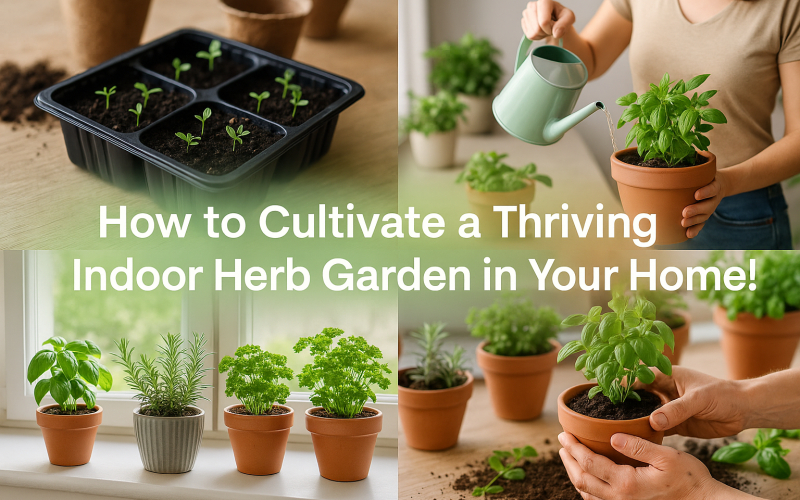Introduction
Imagine plucking fresh basil leaves for your pasta sauce or snipping mint to brighten a glass of iced tea—all from a sunny windowsill. An indoor herb garden brings the joy of fresh flavors into your daily cooking and adds life to any room. In 2025, indoor herb gardening is more accessible than ever thanks to smart planters, seed kits, and easy-care varieties.
This guide covers everything you need to cultivate a thriving indoor herb garden in your home. We start by explaining what an indoor herb garden is and why it matters. In the body, we dive into choosing the right herbs, containers, soil, light, and watering routines. You’ll also learn pruning, pest control, harvesting, and even creative uses for your herbs. We include a handy table of popular herbs and their care needs. By the end, you’ll have a clear plan to grow your own kitchen herbs year-round, no green thumb required.
What is an indoor herb garden?
Defining indoor herb gardens
An indoor herb garden is a small planting setup inside your home dedicated to growing culinary or medicinal herbs. Unlike outdoor beds, indoor gardens live in pots, planters, or specialized hydroponic units. They bring fresh flavors within arm’s reach of your cutting board.
Benefits of growing herbs indoors
Growing herbs indoors offers many perks. You get instant access to fresh leaves without going to the store. Indoor gardens improve air quality by adding green, living plants that filter toxins. They also brighten your décor and connect you to nature in an urban setting.
Why grow herbs indoors in 2025?
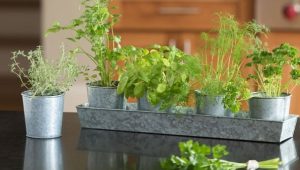
Year-round harvests
Outdoor herb gardens depend on seasons. By growing herbs inside, you avoid winter freezes and summer droughts. You can harvest basil in January or rosemary in July, all under your roof.
Health and cost savings
Fresh herbs boost nutrition, adding vitamins and antioxidants to meals. Buying fresh herbs at the store can be pricey, and they often wilt quickly. An indoor garden pays for itself in a few weeks when you skip store-bought bunches.
Therapeutic routine
Tending plants reduces stress and promotes mindfulness. The simple acts of watering and pruning give a sense of routine and calm. In 2025’s busy world, a small indoor garden can be your morning or evening ritual.
Choosing the best herbs for your indoor garden
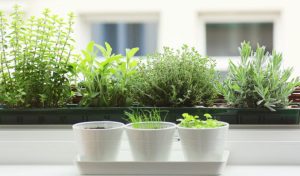
Easy-start herbs
Some herbs thrive in pots with minimal fuss. Basil, mint, chives, and parsley grow quickly from seed or starter plants. They tolerate varying light conditions and bounce back after harvesting.
Flavorful staples
For cooking, pick herbs you use often. Basil lends itself to pesto and salads. Rosemary pairs with roasted vegetables. Thyme and oregano suit soups and sauces. Growing these staples ensures you always have fresh seasoning on hand.
Less common picks
Expand beyond the basics with lemon balm, cilantro, or tarragon. These herbs may need a bit more light or humidity, but they reward you with unique flavors. If you love Mexican cuisine, cilantro is a must-have. Lemon balm adds citrus notes to teas.
Tip: Label each pot with the herb’s name and care notes to avoid confusion and keep track of different routines.
Selecting containers and soil
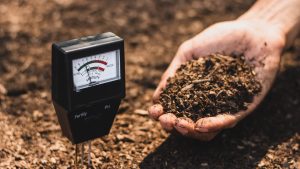
Choosing containers
Herbs need pots with drainage holes to prevent root rot. Terracotta pots wick away excess moisture, while plastic planters retain more water. Self-watering pots with a reservoir help beginners keep moisture consistent.
Soil mix basics
Use a light, well-draining potting mix. Avoid garden soil, which can be too dense. You can mix potting soil with perlite or coarse sand for extra drainage. Some gardeners add compost or worm castings for nutrients.
Container size considerations
Herbs generally grow best in pots at least six inches in diameter. Larger planters give roots room to spread, leading to healthier plants. If you only have windowsill space, choose compact varieties like dwarf basil or baby chives.
Tip: Group pots on a tray to catch excess water and protect your surfaces.
Providing the right light

Natural sunlight
Most herbs need six to eight hours of bright light daily. A south- or west-facing window is ideal. Rotate pots weekly so plants grow evenly and don’t lean toward the light source.
Supplemental grow lights
If your home lacks bright windows, LED grow lights fill the gap. Full-spectrum LEDs mimic sunlight and use little energy. Position lights about 12 inches above the plants for 12–14 hours each day.
Signs of insufficient light
Pale or yellowing leaves, leggy stems, and slow growth indicate too little light. Increase window exposure or add a grow light to keep herbs healthy and bushy.
Watering and humidity

Finding the right balance
Overwatering is the most common mistake. Check soil moisture by feeling the top inch. If it’s dry, water until you see water drain from the pot. Avoid letting herbs sit in standing water.
Humidity needs
Herbs like basil and mint appreciate mild humidity. In dry homes, mist plants or place a shallow tray of water nearby. Grouping pots together also raises local humidity levels.
Water quality
Tap water often works fine, but very hard water can cause mineral buildup. If you see white crust on soil surfaces, switch to filtered or rainwater to protect roots.
Tip: Use a watering can with a narrow spout to direct water to the soil, not the leaves, reducing the chance of mold.
Feeding and fertilizing
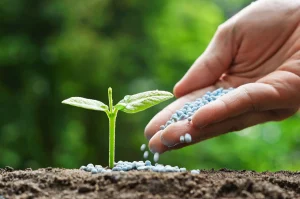
When to fertilize
Herbs in containers need more nutrients than those in garden beds. Feed with a balanced liquid fertilizer diluted to half strength every four to six weeks during the growing season.
Organic options
Organic fertilizers like fish emulsion or seaweed extract provide gentle, natural nutrients. Worm tea—water steeped with worm castings—adds beneficial microbes that boost soil health.
Avoiding overfeed
Too much fertilizer leads to lush foliage and weak flavors. Stick to recommended doses. If herbs grow too quickly but taste bland, skip feeding for a month to concentrate flavors.
Pruning, harvesting, and encouraging growth
Pruning basics
Regular pruning keeps herbs bushy and productive. Pinch off tips just above a leaf node. This stimulates new growth on side shoots, preventing tall, spindly stems.
Best harvest practices
Harvest in the morning after dew dries but before heat stresses the plant. Pick no more than one-third of the plant at once. Use clean scissors or shears to make precise cuts.
Encouraging branching
Pinch out the growing tips of basil and cilantro once they reach 6–8 inches tall. This encourages multiple stems and a fuller plant that yields more leaves over time.
Managing pests and diseases

Common indoor pests
Aphids, spider mites, and fungus gnats can invade potted herbs. Monitor leaves regularly for spots, webs, or sticky residue. Early detection makes control easier.
Natural pest control
Wipe leaves with a mixture of water and mild dish soap to remove insects. For stubborn pests, spray neem oil solution once a week. Sticky traps catch fungus gnats near soil surfaces.
Preventing diseases
Avoid overwatering and ensure good air circulation by spacing pots apart. Remove dead or yellow leaves promptly. Sterilize tools between plants to prevent cross-contamination.
Creative uses for homegrown herbs
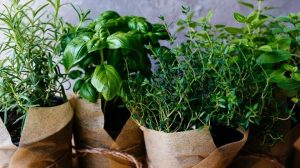
Fresh cooking and garnishes
Nothing beats basil on fresh tomatoes or parsley sprinkled on soup. Mint brightens salads, and rosemary infuses oils and roasted potatoes.
Herbal teas and infusions
Dry lemon balm or mint leaves on a rack, then steep in hot water for a calming tea. Create custom blends with chamomile or lavender if you have other herbs.
DIY herbal projects
Craft homemade herb vinegars, infused oils, or bath salts. Basil vinegar lifts salad dressings, and lavender bath salts soothe after a long day. These projects make thoughtful gifts too.
Table: Popular Indoor Herbs and Care Needs
| Herb | Light Needs | Watering Frequency | Pruning Tips |
|---|---|---|---|
| Basil | Full sun or 12h LED | Every 3–4 days | Pinch tips for bushiness |
| Mint | Partial sun or 8h LED | Every 4 days | Trim runners regularly |
| Chives | Full sun or 10h LED | Every 5 days | Cut leaves to soil level |
| Parsley | Partial sun or 10h LED | Every 4 days | Harvest outer stems first |
| Rosemary | Full sun or 12h LED | Every 7 days | Prune tops after flowering |
| Thyme | Full sun or 12h LED | Every 7 days | Trim sprigs after harvest |
| Cilantro | Partial sun or 8h LED | Every 4 days | Harvest tops to slow bolt |
Seasonal adjustments and care
Winter care
Shorter days and lower humidity in winter can slow growth. Move herbs to the brightest window and extend light with LEDs. Reduce watering slightly and feed only once a month.
Summer tips
High indoor heat in summer may dry soil faster. Increase misting and check soil daily. Watch for signs of heat stress—wilting or brown leaf tips—and move plants away from hot vents.
Conclusion
Cultivating a thriving indoor herb garden brings fresh flavors, health benefits, and a touch of nature to your home. With the right herbs, containers, soil, light, and care, you can enjoy basil, mint, parsley, and more year-round. Regular pruning, mindful watering, and natural pest control keep plants healthy and productive. Creative uses—from cooking to DIY gifts—make your garden more than just décor. Start small with a few easy herbs, then expand as you gain confidence. Your indoor garden awaits—grab seeds, pick a sunny spot, and let the growing begin!
Call-to-Action (CTA): Ready to grow your own herbs? Download our free Indoor Herb Garden Starter Guide with step-by-step planting schedules and care checklists!






